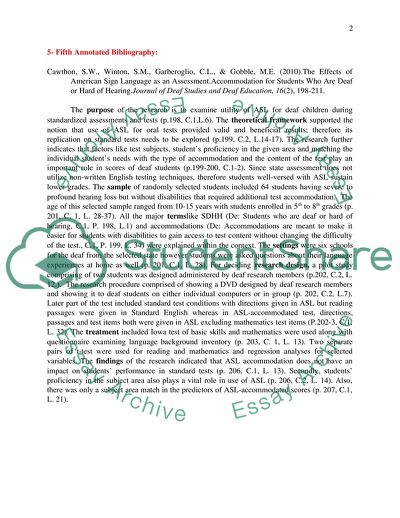Cite this document
(Learning Sign Language Annotated Bibliography Example | Topics and Well Written Essays - 2000 words, n.d.)
Learning Sign Language Annotated Bibliography Example | Topics and Well Written Essays - 2000 words. https://studentshare.org/education/1804026-five-annotated-bibliography-on-learning-sign-language-or-american-sign-language-asl-for-deafhard-of-hearing
Learning Sign Language Annotated Bibliography Example | Topics and Well Written Essays - 2000 words. https://studentshare.org/education/1804026-five-annotated-bibliography-on-learning-sign-language-or-american-sign-language-asl-for-deafhard-of-hearing
(Learning Sign Language Annotated Bibliography Example | Topics and Well Written Essays - 2000 Words)
Learning Sign Language Annotated Bibliography Example | Topics and Well Written Essays - 2000 Words. https://studentshare.org/education/1804026-five-annotated-bibliography-on-learning-sign-language-or-american-sign-language-asl-for-deafhard-of-hearing.
Learning Sign Language Annotated Bibliography Example | Topics and Well Written Essays - 2000 Words. https://studentshare.org/education/1804026-five-annotated-bibliography-on-learning-sign-language-or-american-sign-language-asl-for-deafhard-of-hearing.
“Learning Sign Language Annotated Bibliography Example | Topics and Well Written Essays - 2000 Words”. https://studentshare.org/education/1804026-five-annotated-bibliography-on-learning-sign-language-or-american-sign-language-asl-for-deafhard-of-hearing.


